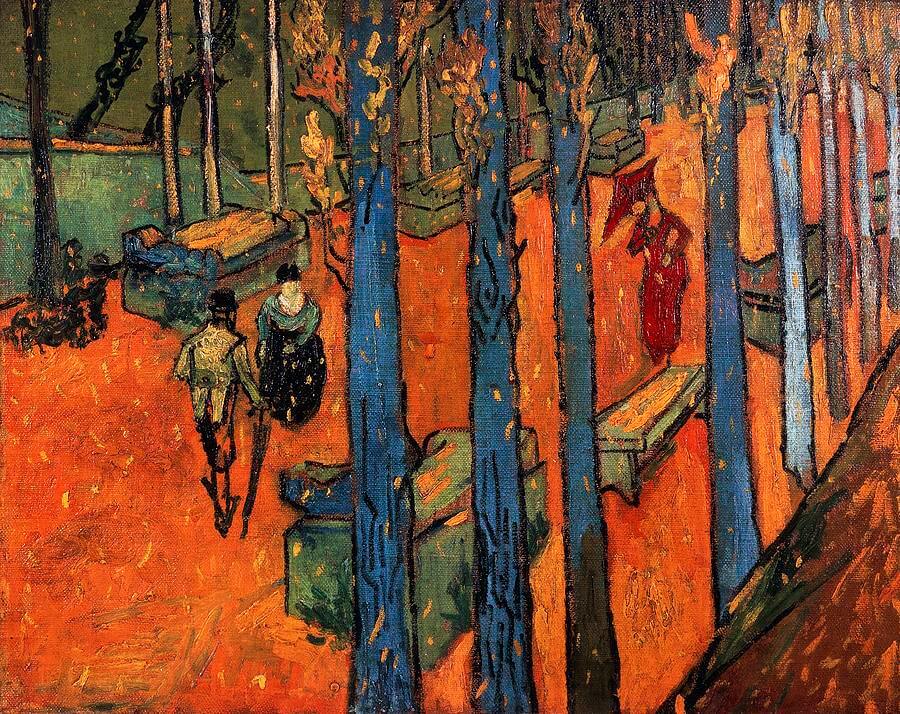The Aliscamps at Arles, 1888 by Vincent van Gogh

During his three-month stay in Arles Gauguin encouraged Van Gogh to abandon his predominantly Naturalist aesthetic principles, his need to paint directly from the motif. Gauguin argued that the artist should experiment more freely with the motif, using devices such as flattened areas of pure colour and a more decorative and abstracted line. He had brought with him examples of Emile Bernard's recent work in this direction. Van Gogh, desirous of keeping up with his fellow vanguardists, was at first willing to experiment along similar lines. In this painting of the Aliscamps at Arles, a long tree-lined pathway bordered by Roman sarcophagi, Van Gogh has adopted an oblique viewpoint which angles our vision down and across the promenade, excluding the sky and blocking any perspective into the distance. Trees, grass and pathway are painted in solid, heightened colours. The shapes are heavily and decoratively outlined.
The scene is also a response to Bernard's work in another way. It is a scene of modern urban leisure. Here the bourgeois of Arles display themselves in a public promenade. Van Gogh knew Bernard's Seurat-like watercolour of a Sunday afternoon in a Breton meadow. He had noted of this work in a letter that it included two figures, ladies dressed in modern fashions and painted respectively in red and green. These figures and their colours made Bernard's otherwise regional genre scene 'a very modern thing'. In his own painting Van Gogh has included a fashionably dressed female figure in red. She stands in sharp colouristic opposition to the predominant green of the trees and the grass, and signals Van Gogh's ambition to make of his painting an equally 'modern' thing.




















